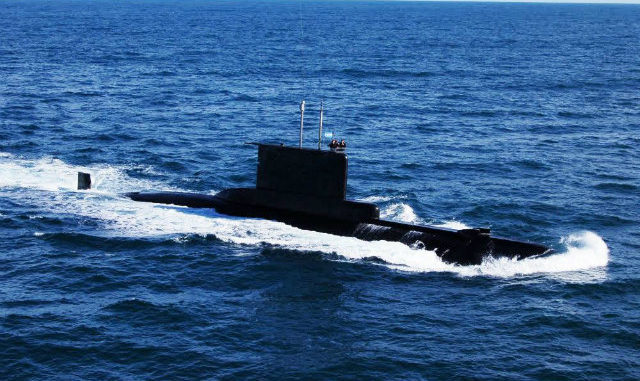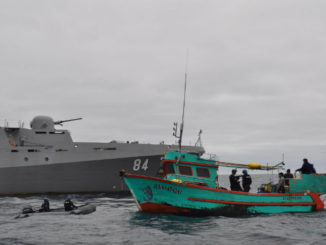
BUENOS AIRES – The Argentine navy has stepped up its search of the South Atlantic for a submarine with 44 crew on board that remains missing two days after its last communication on Wednesday.
ARA San Juan was in the western south Atlantic some 432 kilometers from the Patagonian coast close to the San Jorge Gulf, when it sent its last signal on Wednesday midday, naval spokesman Enrique Balbi said on Friday.
The United States, United Kingdom, Chile, Brazil, Uruguay, Peru and South Africa have offered logistics help for the search effort, and the first to join was a NASA aircraft with sophisticated equipment which was about to take off from Ushuaia, Tierra del Fuego to Antarctica.
President Mauricio Macri pledged all the necessary resources to recover the German built submersible with a crew which includes the first submariner woman officer in the Argentine navy. Defense minister Oscar Aguad who was attending a UN security conference in Canada immediately returned to Argentina, to the Mar del Plata submarines’ base, from where search efforts are been coordinated and to talk to the crew’s relatives.
The diesel electric battery powered ARA San Juan was sailing from Ushuaia in Tierra del Fuego to Mar del Plata, a 7 to 8 day travel, depending on weather conditions. The German built submarine was launched in 1983, and incorporated to the Argentine navy in 1985. In 2008/10 it underwent in depth maintenance and refitting in an Argentine government yard.
Balbi said the emergency “combing” operation was formally upgraded to a “search and rescue” on Friday evening (local time) after no visual or radar contact was made with the submarine.
“Detection has been difficult despite the quantity of boats and aircraft [in in the search],” he said, noting that heavy winds and high waves were complicating efforts.
“Obviously, the number of hours that have passed — two days in which there has been no communication — is of note.”
The Navy’s working hypothesis is that the submarine had communication difficulties off the province of Chubut that may have been caused by an electrical outage, Balbi said. Navy protocol would call for the submarine to come to the surface once communication was lost. “We expect that it is on the surface,” Balbi said.
“Without wanting to be alarmist or overdramatic, the facts are that … no form of communications could be established between the vessel and its command, even with the alternative methods that the submarine has.
”What we interpret is that there must have been a serious problem with the communications [infrastructure] or with the electrical supply, cables, antennae or other [onboard] equipment.“
Admiral Gabriel Gonzalez, chief of the Mar del Plata base southeast of Buenos Aires, said the vessel had sufficient food and oxygen.”We have a loss of communications; we are not talking of an emergency,” he said. Relatives of some of the crewmembers were at the base awaiting word of the search.
The search and rescue effort on Friday evening included four navy surface vessels, air force and navy aircraft, plus the US NASA P-3 explorer. Britain has offered the Hercules C 130 stationed in the Falklands, Chile is sending a special all weather day and night survey aircraft and Brazil a submarine rescue vessel, Felinto Perry, K/11.—MercoPress



